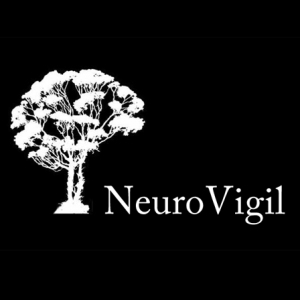by
Brendon Nafziger, DOTmed News Associate Editor | November 19, 2009

The iBrain, made by
NeuroVigil, could help
predict drug side effects
by monitoring changes
in brainwaves
Imagine a device the size of a cell phone that by reading brainwaves can predict drug interactions, diagnose Alzheimer's and depression before a doctor could, and even identify how genetically related you are to someone without analyzing your DNA.
NeuroVigil, a La Jolla, Calif.-based startup, claims the iBrain may one day do all this, and apparently even Big Pharma agrees.
The iBrain, which Philip Low, Ph.D., the founder and CEO of NeuroVigil, demonstrated about two weeks ago at this year's TEDMED conference in California, is about the size of a cell phone. As with other electroencephalography (EEG) devices, it uses an electrode to record brainwaves during sleep (Dr. Low says variability in brainwaves is greater at rest than awake, so the data are more useful).



Ad Statistics
Times Displayed: 6
Times Visited: 2 Fast-moving cardiac structures have a big impact on imaging. Fujifilm’s SCENARIA View premium performance CT brings solutions to address motion in Coronary CTA while delivering unique dose saving and workflow increasing benefits.
The difference lies in its scope. Although it only runs on a single channel -- most EEG readers need many more electrodes and only score sleep or sleep apnea -- it produces "maps" that draw a complete picture of the activity of a sleeping brain, providing enough information, Dr. Low claims, that they may identify "biomarkers" from it: unique patterns of arousal that correlate with neuropathologies such as Alzheimer's, schizophrenia, Parkinson's and depression. These biomarkers may even indicate when someone had a pathology before it was fully clinical or the person was even aware of it. This could be of interest, perhaps, to a pharmaceutical company, as it can show whether a drug was having any unusual effects that could be otherwise hard to detect in the relatively small number of patients participating in a brief and early clinical trial.
According to NeuroVigil, it can create this map because their algorithms pick up very high frequency brainwaves that are usually overwhelmed by the higher amplitude, low frequency signals that dominate the brainwave spectrum. By comparing these high frequency signals with data collected from other studies, the researchers can pinpoint the location in the brain that the activity is coming from.
"That's how we can link a particular signal to a particular structure, allowing us to unmask hidden data from the signal," Dr Low says.
And according to NeuroVigil, it is this "map" -- different frequencies at different powers coming from different parts of the brain during different phases of sleep -- that may provide clues to disease and drug effects.
Already, Big Pharma has shown interest. Last month, NeuroVigil announced they had reached an agreement with Swiss drug behemoth Roche, though not much is known about the deal. In light of an existing confidentiality agreement, Dr. Low would not comment on it or talk about what his company would do for Roche.

